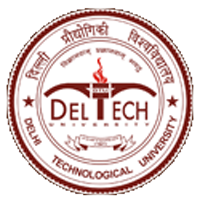Please use this identifier to cite or link to this item:
http://dspace.dtu.ac.in:8080/jspui/handle/repository/21325Full metadata record
| DC Field | Value | Language |
|---|---|---|
| dc.contributor.author | KAUR, JAPJI | - |
| dc.date.accessioned | 2024-12-23T06:28:10Z | - |
| dc.date.available | 2024-12-23T06:28:10Z | - |
| dc.date.issued | 2024-10 | - |
| dc.identifier.uri | http://dspace.dtu.ac.in:8080/jspui/handle/repository/21325 | - |
| dc.description.abstract | Science and technology have been considered a male-dominated profession, with women holding fewer leadership positions. They are universally under-represented in STEM (Science,Technology, Engineering, Maths) fields. Despite comprising roughly half of the workforce, women remain a minority in many STEM disciplines, particularly at higher academic levels and leadership positions. Retaining women in education and, hence, careers in science is essential for an economy’s national development as they can bring a different outlook for every sphere by making it more diverse and also lead to women's empowerment. The first objective ofthe study is to map gender of the HoD’s and assess the gender. The second part of the first objective discusses the poor work-life balance (WLB) of heads. The second objective is to measure the productivity of faculty members and. it across gender, level, and branch. The thirdobjective is to investigate the effect of women's leadership on placements. The fourth objectiveis to evaluate the impact of gender of the leader on the University Social Responsibilty. The fifthobjective is to investigate the gender-wise difference of HoD’s in attracting funds from the corporate and government sector. Data has been collected from 127 heads of STEM departments in 20 engineering institutions of Delhi by conducting a census and analyzed with STATA 14.0 and SPSS. The data for the second objective was collected from Google Scholar profiles of 1293 tenured faculty members. Their productivity was calculated by summating the h index, i10, and citations. We employ the probit model given that the dependent variable is binary (above the state average 1, below 0). The average is defined as the average productivity of faculty in all the engineering colleges in Delhi. For each researcher, we determine the difference between their productivity and average. If a researcher's productivity is above the average, they receive a score of 1; if it is below the state average, they receive a score of 0. Productivity has been taken as the dependent variable, whereas gender, designation, and branch are independent variables. Further, the interaction effect of gender with the rest of the two independent variables has been studied to get a clear pictureof the research productivity in various colleges. The third objective discusses the effect of the gender of the leader on the no. of placements. An independent t-test was used to comparethe means across male and female heads. The fourth objective discusses higher education institutions’ diverse social responsibility initiatives and assesses their impact on stakeholders (present students, future students, supporters, etc.). Social responsibility emphasizes contributions to sustainable development and proactive solutions to societal and environmental challenges. Recognizing universities ascrucial pillars of society, this research explores how they foster socially responsible values in students to cultivate responsible citizenship, which, in turn, focuses on developing the next generationof leaders and industry experts. DELHI TECHNOLOGICAL UNIVERSITY Sahbad Daulatpur, Main Bawana Road Delhi-110042 (India) v Data was collected using semi-structured interviews with 103 heads of STEM (Science, Technology, Engineering, Mathematics) departments in 20 engineering colleges in Delhi, India. Thematic analysis was conducted using QDA Miner Lite. It discusses the type of USR activities that the students were engaged in, challenges faced in their implementation, and collaborations with the corporates, NGOs, and universities, followed by an assessment of the progress a student undergoes after engaging in a USR activity. It highlights the potential of promoting students' participation in diverse university-based experiences, fostering community engagement, and enhancing their development as professionals and socially responsible citizens. Further, it gives recommendations to achieve environmental sustainability on the part of stakeholders. The fifth objective discusses the ability of the leader to attract funds from the corporate and government sectors on the gender of the head. The results reveal that work-life balance is significantly different across male and female heads, and there are more male heads in all the20 engineering colleges in Delhi. The productivity differs by gender, designation and branch. It is more in the case of male heads. There are significant differences between male and female heads in the number of placements in a STEM department. The male heads are able to collaborate with the corporates and get them to the universities for placements. The male heads were more engaged into economic and environmental USR activities whereas the female heads were involved into social activities. Male heads are more able to draw funds from the govt. and corporate sector and have a better WLB than the female heads. Further, the study provides suggestions to the stakeholders for increasing more women in leadership positions, enhancingproductivity of faculty, USR activities etc. | en_US |
| dc.language.iso | en | en_US |
| dc.relation.ispartofseries | TD-7721; | - |
| dc.subject | LEADERSHIP OF WOMEN | en_US |
| dc.subject | STEM EDUCATION | en_US |
| dc.subject | ENGINEERING INSTITUTIONS IN DELHI | en_US |
| dc.subject | USR ACTIVITY | en_US |
| dc.title | THE LEADERSHIP OF WOMEN IN STEM EDUCATION: A STUDY OF ENGINEERING INSTITUTIONS IN DELHI | en_US |
| dc.type | Thesis | en_US |
| Appears in Collections: | Ph D | |
Files in This Item:
| File | Description | Size | Format | |
|---|---|---|---|---|
| Japji Kaur Ph.D..pdf | 1.57 MB | Adobe PDF | View/Open |
Items in DSpace are protected by copyright, with all rights reserved, unless otherwise indicated.



